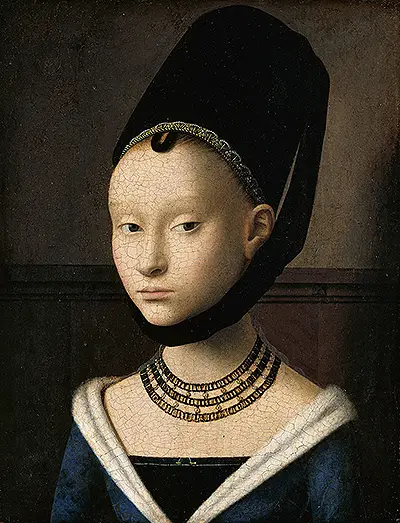Petrus Christus was a highly significant Early Netherlandish artist from the 15th century who achieved most success in and around the historic city of Bruges.
Introduction
Christus was fortunate to be working in a key hub of art and commerce furing the 15th century, namely the city of Bruges. Here he could enjoy all the artistic influences and opportunities that anyone could wish for, from painting, to engraving plus architecture and literature too. The region was already established with its own masters and Christus was one of the talented young artists tasked with continuing this legacy.
Early Life
Petrus Christus was born in Baarle-Hertog, a Dutch-speaking municipality in Flanders, modern-day northern Belgium. The death of Jan van Eyck in 1441 left a prestigious studio in Bruges without artistic leadership, and Christus stepped in. This opportunity allowed him to quickly establish himself as the leading painter in Bruges for a number of decades, combining his own technical strengths with the abundance of contacts that came with taking over such a respected studio.
Life in Bruges
Bruges was able to leverage its geographical advantage throughout the 15th century to become a major hub for trade all across Europe. It became a centre for the wool and cotton industries and this prosperity would eventually spread wealth into the arts, ensuring artists and architects could get regular work. One of the consequences of this was the formation of a guild system, such as with the Guild of Saint Luke, which ensured a consistent quality across different art schools.
There was also a strong mix of religious and civic bodies that provided opportunities to local artists. They would in turn compete with each other in order to boast some of the finest art within their respective buildings. As Bruges' cultural reputation grew, so other donors from elsewhere would also start to be drawn to the area.
Influences on Petrus Christus
Relationship with Jan van Eyck
Many initially assumed that Petrus Christus was a pupil of Jan van Eyck because of the similarity of some of their work, as well as the fact that Christus took over the master's studio after his death. More recent research, however, would suggest otherwise, and that whilst the younger artist may have respected and admired Van Eyck's paintings from afar, he was actually influenced by a number of other artists just as much.
Other Artists
The influence of Dirk Bouts, Robert Campin and Rogier van der Weyden can all be found in Christus' work. Elements found in Lamentation, for example, have been compared to van der Weyden's Deposition. These influences were not consistent though, and many other artworks would be entirely original with no connection to others.
One of the earliest chapters in the history of this emancipation of Dutch art brings us to the work of Petrus Christus, the most minor of the major masters of Early Netherlandish painting.
Otto Pacht, Early Netherlandish Painting, PP77
Petrus Christus Artwork Gallery
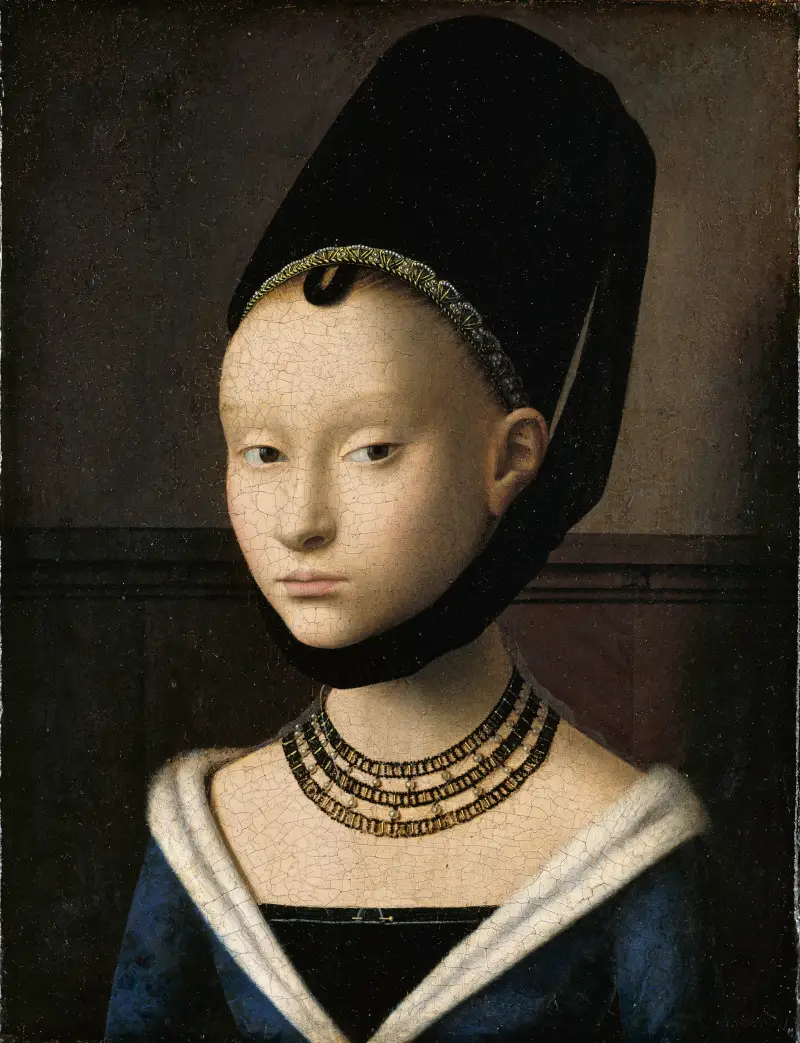
Portrait of a Young Woman
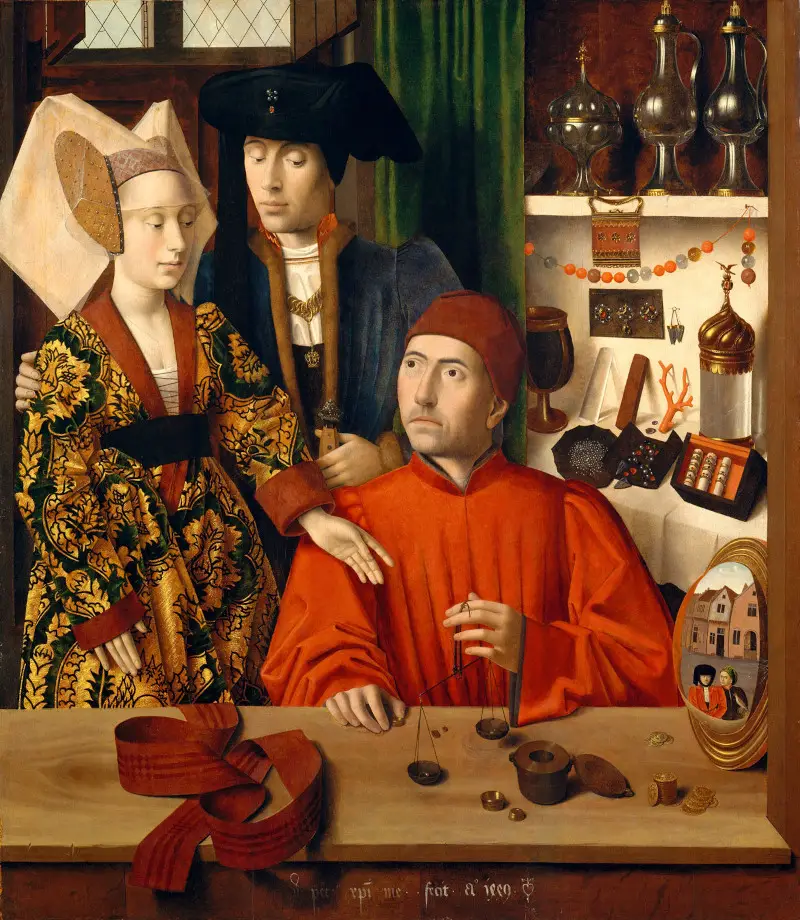
A Goldsmith in his Shop
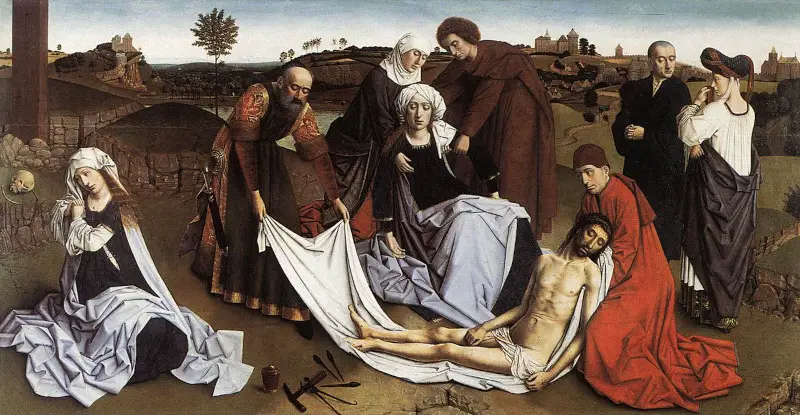
Lamentation
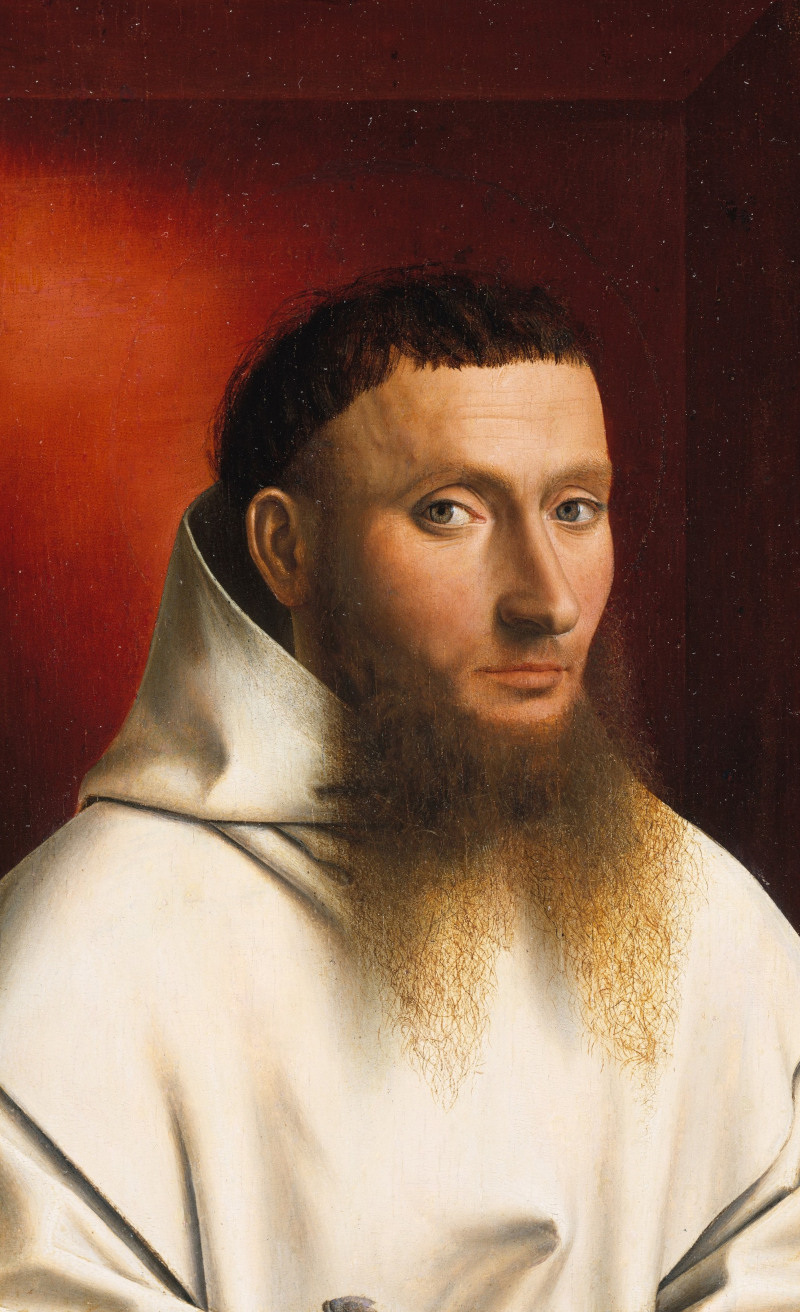
Portrait of a Carthusian
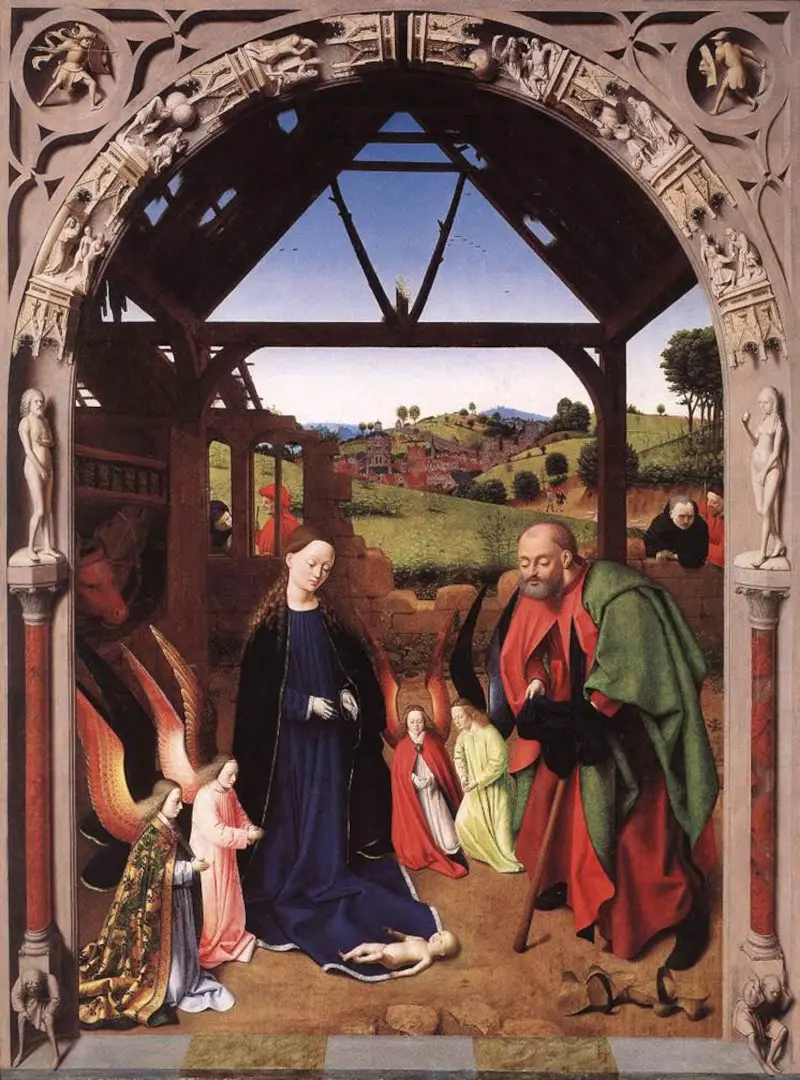
Nativity
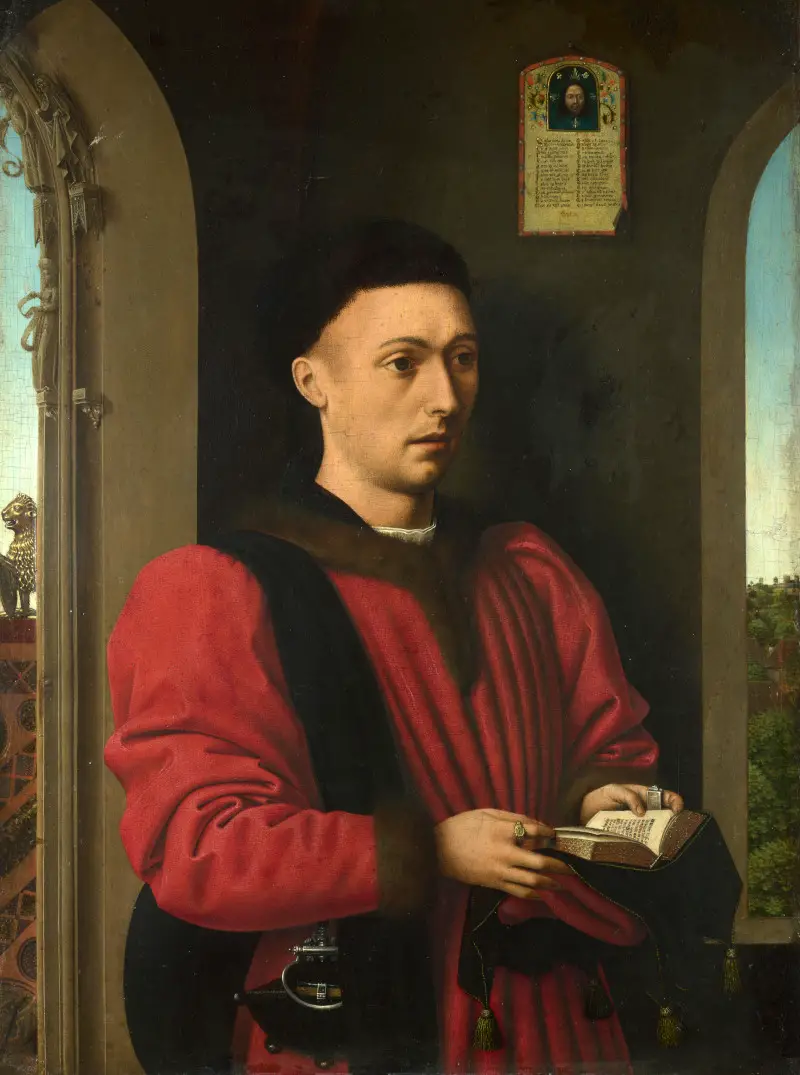
Portrait of a Young Man
Style and Technique
One unique aspect to much of Christus's work is in how he laid out his scenes, with figures often being placed independently of each other. There would be space between each single figure or group, where as other Early Netherlandish artists would prefer to overlap each and every element to ensure greater fluidity.
There would also be little interaction between foreground and background, and it could be as if individual elements of the scene were added separately, without a clear plan on how to bring everything together. That said, there is still much to admire about his paintings, such as the restrained emotions found within many of them, bringing a calmness to the viewer.
As discussed by Otto Pacht in Early Netherlandish Painting, the artist would then move towards the use of smaller figures within his more complex scenes (see Crucifixion), whilst still completing the occasional standard portrait (see Portrait of a Young Man and Portrait of a Young Woman).
Sadly, the difficulties that have existed to precisely dating the artist's work have made it harder for us to confidently track his evolution as an artist, and many have wrongly described Petrus Christus as a direct pupil to master Van Eyck.
Major Artworks
Portrait of a Young Woman
This portrait is dated towards the end of the artist's career and features an impressive use of subtle lighting which allows the portrait to glow, whilst also generating a strange atmosphere in which we cannot quite connect with the sitter's feelings. The serious expression leaves a memorable impression which makes this one of the artist's most famous paintings.
 Portrait of a Young Woman
Portrait of a Young Woman
Portrait of a Carthusian
Another famous piece from Christus, this painting features a beautifully crafted portrait, complete with an intricate, lifelike beard. There is also a fly perched on the bottom of the frame, delivered in a playful manner which was highly innovative for the period. The precise meaning behind the 15th century fashion for including flies in this manner has never been entirely agreed upon, though they may bring an element of symbolism to the artwork.
A Goldsmith in His Shop (St Eligius in His Workshop)
This artwork, which exists under a number of different titles, is dated to around 1449. The triple portrait captures a huge amount of detail and also includes the artist's typical method of having relatively few emotions in his subjects. Historians have found many elements across the background to discuss in terms of symbolism or other meaning, and there is much to consider in this charming piece.
Lamentation
Lamentation is notable for the method used by the artist to lay out the different groups of people. Each could almost be from another artwork, and Christus purposely applies them separately, though making sure to place them at different distances from the viewer. The foreground and background also do not smoothly transition from one to the other, but this style was typical of the artist and purposely done.
 Lamentation
Lamentation
Legacy
Whilst Petrus Christus did not immediately match the incredible detail of Jan van Eyck, he did slowly transition towards a similar level over the course of his career. He was highly talented as a portrait painter, and some of his works achieved a balance between proximity to the sitter, but also a strange psychological disconnect, particularly in examples such as the enchanting, Portrait of a Young Woman.
His legacy was to be classified as a lesser known master, which in 15th century Bruges, is certainly no insult. He successfully steered Jan van Eyck's studio for another generation, ensuring the city did not lose its artistic status across Europe, and he also added some of his own innovations in terms of composition.
Conclusion
We can conclude that Petrus Christus was a key component in the success of Bruges having successfully steered the studio of Jan van Eyck, after the great master had passed away. He combined the qualities of many of the other great names in the region with some of his own innovations and was particularly skilled in portraits and figurative art. Whilst often being overshadowed by some of the other great names to be found in 15th century Flemish art, there is still very much a place for this technically impressive painter within the overall story.
References
- Otto Pacht, Early Netherlandish Painting, Harvey Miller Publishers, PP77-PP90



